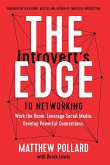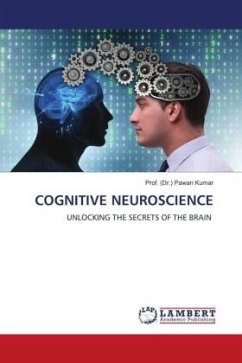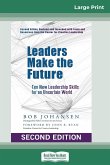- Gebundenes Buch
- Merkliste
- Auf die Merkliste
- Bewerten Bewerten
- Teilen
- Produkt teilen
- Produkterinnerung
- Produkterinnerung
Simple, easy to follow and clear, this book takes complex and validated thinking and research from psychotherapies, psychology and neuroscience, to create simple approaches that have been proven to work in helping leaders address the challenges and tensions experienced day to day.
Andere Kunden interessierten sich auch für
![The Introvert's Edge to Networking The Introvert's Edge to Networking]() Matthew PollardThe Introvert's Edge to Networking17,99 €
Matthew PollardThe Introvert's Edge to Networking17,99 €![The Process of Highly Effective Coaching The Process of Highly Effective Coaching]() Robert F. HicksThe Process of Highly Effective Coaching158,99 €
Robert F. HicksThe Process of Highly Effective Coaching158,99 €![Unlocking Happiness at Work Unlocking Happiness at Work]() Jennifer MossUnlocking Happiness at Work76,99 €
Jennifer MossUnlocking Happiness at Work76,99 €![COGNITIVE NEUROSCIENCE COGNITIVE NEUROSCIENCE]() Prof. Kumar (Dr.) PawanCOGNITIVE NEUROSCIENCE29,99 €
Prof. Kumar (Dr.) PawanCOGNITIVE NEUROSCIENCE29,99 €![The Social Cognitive Neuroscience of Leading Organizational Change The Social Cognitive Neuroscience of Leading Organizational Change]() Robert A. SnyderThe Social Cognitive Neuroscience of Leading Organizational Change214,99 €
Robert A. SnyderThe Social Cognitive Neuroscience of Leading Organizational Change214,99 €![Leaders Make the Future Leaders Make the Future]() Bob JohansenLeaders Make the Future39,99 €
Bob JohansenLeaders Make the Future39,99 €![MindPowered® Coaching for Professionals MindPowered® Coaching for Professionals]() Alvin OhMindPowered® Coaching for Professionals177,99 €
Alvin OhMindPowered® Coaching for Professionals177,99 €-
-
-
Simple, easy to follow and clear, this book takes complex and validated thinking and research from psychotherapies, psychology and neuroscience, to create simple approaches that have been proven to work in helping leaders address the challenges and tensions experienced day to day.
Produktdetails
- Produktdetails
- Verlag: Routledge
- Seitenzahl: 196
- Erscheinungstermin: 26. August 2025
- Englisch
- Abmessung: 240mm x 161mm x 15mm
- Gewicht: 464g
- ISBN-13: 9781041033080
- ISBN-10: 1041033087
- Artikelnr.: 73530815
- Herstellerkennzeichnung
- Libri GmbH
- Europaallee 1
- 36244 Bad Hersfeld
- gpsr@libri.de
- Verlag: Routledge
- Seitenzahl: 196
- Erscheinungstermin: 26. August 2025
- Englisch
- Abmessung: 240mm x 161mm x 15mm
- Gewicht: 464g
- ISBN-13: 9781041033080
- ISBN-10: 1041033087
- Artikelnr.: 73530815
- Herstellerkennzeichnung
- Libri GmbH
- Europaallee 1
- 36244 Bad Hersfeld
- gpsr@libri.de
Kate Pearlman-Shaw specialises in helping leaders to change their behaviours. She worked for 18 years as a UK Clinical Psychologist and leader, and has spent the past 20 years working internationally as a leadership development coach and facilitator for private and public sector organisations. She is a double Chartered Psychologist with the British Psychological Society, both as a Coaching Psychologist and a Clinical Psychologist.
Section 1: The three base models 1. Model 1: The neurobiology of leadership
2. Model 2: The mechanics of communication: the ego states 3. Model 3: The
psychology of how humans adapt to change: the transition tasks Section 2:
Applying the neurobiology 4. How do I keep my brain working at work? The
neurobiology of resilience: avoiding burnout in today's workplace 5. How do
get the best from someone? Understanding individual neurobiology: avoiding
threat and building rewards: the seven types 6. How do I manage in limited
time? The tired brain: the enemy of effective leadership 7. How do I engage
and motivate a set of diverse people with different views? The neurobiology
of inclusion and psychological safety Section 3: Communication: using the
ego states 8. What's going wrong in this workplace relationship? Using the
ego states to understand relationship dynamics 9. We disagree: how do I
handle that? How to have conversations that have impact, but don't lead to
conflict and disengagement 10. How do I get the best out of my colleagues?
Simple acts that create reward: using the ego states and introducing the
'Strokes' Section 4: Using the transition tasks 11. I'm about to create
change - how do I do that and still take people with me? How to harness the
positivity of a transition: setting and maintaining the environment for
change 12. How do I influence when someone is resistant and defensive? The
psychology of influencing Section 5: Using all three models in combination
13. How do I give challenging feedback so its heard and acted upon? The art
of feedback: 'the most threat inducing act of leadership' 14. How do I
instil ownership? What to do when someone is not performing as you need
them to 15. How can I be heard? The psychology of 'voice' 16. How do I lead
a whole team effectively? Contemporary team psychology Section 6:
Twenty-first century leadership 17. Can anyone lead? If I change my
behaviours, do I change myself? Effective twenty-first century leadership
2. Model 2: The mechanics of communication: the ego states 3. Model 3: The
psychology of how humans adapt to change: the transition tasks Section 2:
Applying the neurobiology 4. How do I keep my brain working at work? The
neurobiology of resilience: avoiding burnout in today's workplace 5. How do
get the best from someone? Understanding individual neurobiology: avoiding
threat and building rewards: the seven types 6. How do I manage in limited
time? The tired brain: the enemy of effective leadership 7. How do I engage
and motivate a set of diverse people with different views? The neurobiology
of inclusion and psychological safety Section 3: Communication: using the
ego states 8. What's going wrong in this workplace relationship? Using the
ego states to understand relationship dynamics 9. We disagree: how do I
handle that? How to have conversations that have impact, but don't lead to
conflict and disengagement 10. How do I get the best out of my colleagues?
Simple acts that create reward: using the ego states and introducing the
'Strokes' Section 4: Using the transition tasks 11. I'm about to create
change - how do I do that and still take people with me? How to harness the
positivity of a transition: setting and maintaining the environment for
change 12. How do I influence when someone is resistant and defensive? The
psychology of influencing Section 5: Using all three models in combination
13. How do I give challenging feedback so its heard and acted upon? The art
of feedback: 'the most threat inducing act of leadership' 14. How do I
instil ownership? What to do when someone is not performing as you need
them to 15. How can I be heard? The psychology of 'voice' 16. How do I lead
a whole team effectively? Contemporary team psychology Section 6:
Twenty-first century leadership 17. Can anyone lead? If I change my
behaviours, do I change myself? Effective twenty-first century leadership
Section 1: The three base models 1. Model 1: The neurobiology of leadership
2. Model 2: The mechanics of communication: the ego states 3. Model 3: The
psychology of how humans adapt to change: the transition tasks Section 2:
Applying the neurobiology 4. How do I keep my brain working at work? The
neurobiology of resilience: avoiding burnout in today's workplace 5. How do
get the best from someone? Understanding individual neurobiology: avoiding
threat and building rewards: the seven types 6. How do I manage in limited
time? The tired brain: the enemy of effective leadership 7. How do I engage
and motivate a set of diverse people with different views? The neurobiology
of inclusion and psychological safety Section 3: Communication: using the
ego states 8. What's going wrong in this workplace relationship? Using the
ego states to understand relationship dynamics 9. We disagree: how do I
handle that? How to have conversations that have impact, but don't lead to
conflict and disengagement 10. How do I get the best out of my colleagues?
Simple acts that create reward: using the ego states and introducing the
'Strokes' Section 4: Using the transition tasks 11. I'm about to create
change - how do I do that and still take people with me? How to harness the
positivity of a transition: setting and maintaining the environment for
change 12. How do I influence when someone is resistant and defensive? The
psychology of influencing Section 5: Using all three models in combination
13. How do I give challenging feedback so its heard and acted upon? The art
of feedback: 'the most threat inducing act of leadership' 14. How do I
instil ownership? What to do when someone is not performing as you need
them to 15. How can I be heard? The psychology of 'voice' 16. How do I lead
a whole team effectively? Contemporary team psychology Section 6:
Twenty-first century leadership 17. Can anyone lead? If I change my
behaviours, do I change myself? Effective twenty-first century leadership
2. Model 2: The mechanics of communication: the ego states 3. Model 3: The
psychology of how humans adapt to change: the transition tasks Section 2:
Applying the neurobiology 4. How do I keep my brain working at work? The
neurobiology of resilience: avoiding burnout in today's workplace 5. How do
get the best from someone? Understanding individual neurobiology: avoiding
threat and building rewards: the seven types 6. How do I manage in limited
time? The tired brain: the enemy of effective leadership 7. How do I engage
and motivate a set of diverse people with different views? The neurobiology
of inclusion and psychological safety Section 3: Communication: using the
ego states 8. What's going wrong in this workplace relationship? Using the
ego states to understand relationship dynamics 9. We disagree: how do I
handle that? How to have conversations that have impact, but don't lead to
conflict and disengagement 10. How do I get the best out of my colleagues?
Simple acts that create reward: using the ego states and introducing the
'Strokes' Section 4: Using the transition tasks 11. I'm about to create
change - how do I do that and still take people with me? How to harness the
positivity of a transition: setting and maintaining the environment for
change 12. How do I influence when someone is resistant and defensive? The
psychology of influencing Section 5: Using all three models in combination
13. How do I give challenging feedback so its heard and acted upon? The art
of feedback: 'the most threat inducing act of leadership' 14. How do I
instil ownership? What to do when someone is not performing as you need
them to 15. How can I be heard? The psychology of 'voice' 16. How do I lead
a whole team effectively? Contemporary team psychology Section 6:
Twenty-first century leadership 17. Can anyone lead? If I change my
behaviours, do I change myself? Effective twenty-first century leadership








